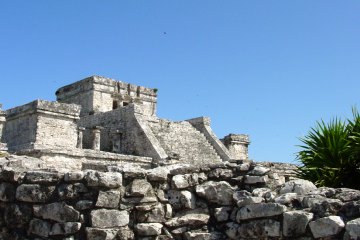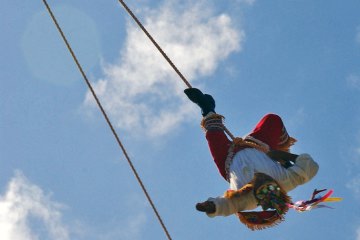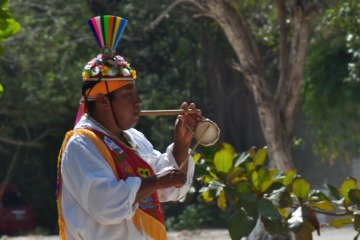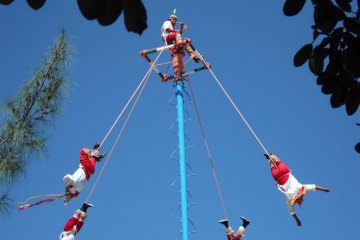As we’ve noted for other ruins in Quintana Roo and Yucatan, there are a couple reasons why you’ll want to get an early start on your day when you visit the Tulúm ruins. Foremost is because no matter when you arrive, once you get there, you aren’t going to be alone. If you can manage to get there early in the day you stand a better chance of missing the worst of the crowd. And secondly, there is very little shade of any kind in Tulúm and if you get there in the morning, you will enjoy the added benefit of a cooler temperatures than you’ll experience later in the day.
Due partly to it’s location near the tourist centers of Cancún, Playa del Carmen and Cozumel and also due to some degree to the bus loads of cruise ship passengers that take excursions there each day, Tulúm is the most visited Mayan site in the Yucatán. While not a large city in terms of size or in the number or restored structures, Tulúm’s cliff-side location overlooking the Caribbean provides some beautiful vistas and the ease in getting there makes it an attractive stop for tourists.
Tulúm was built in the 13th Century well after the zenith of the Mayan civilization. It was one of the few old cities that were still occupied at the time of the Spanish invasion.
While the architecture in Tulúm is not as elaborate as you might find in many other cities built in earlier days, the restored structures there are of interest. The Castillo pictured in the top photo sits high upon the edge of a cliff offering a good view of the ocean and the countryside and a lovely white sand beach below. In fact, you may want to wear your swim suit when you visit so you can take a cooling dip in the water if the mood strikes you. In several of the structures, glimpses of color are still visible where ancient frescoes were painted
Entrance is free on Sunday, and $40 pesos during the rest of the week. You will be changed an additional $40 pesos if you want to take along your video camera. English speaking guides are available for an additional charge.
If your timing is good, just off the parking lot near the entrance to the ruins you may get a chance to see the Danza de los Voladores (as shown below.) This “Dance of the Flyers” recreates a Totonac Indian ceremony thought to have originally been a prayer to the rain gods. Four flyers climb a 100 foot tall tower and each places a foot into a rope that is wrapped around the tower before launching themselves into an expanding spiral to the ground. While the ceremony is more associated with some other parts of central Mexico, it is an interesting sidelight. There is no charge for viewing the ceremony but donations are encouraged.






